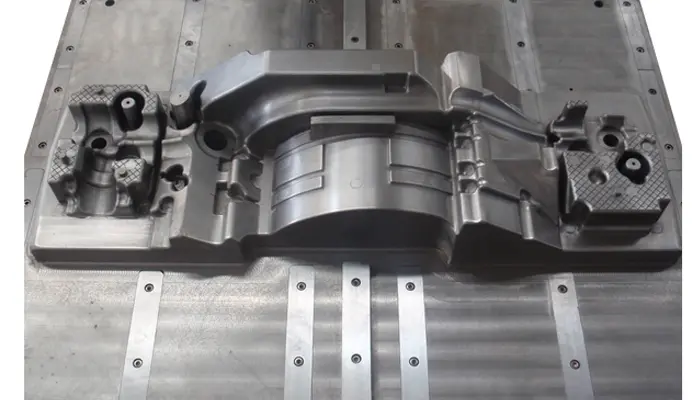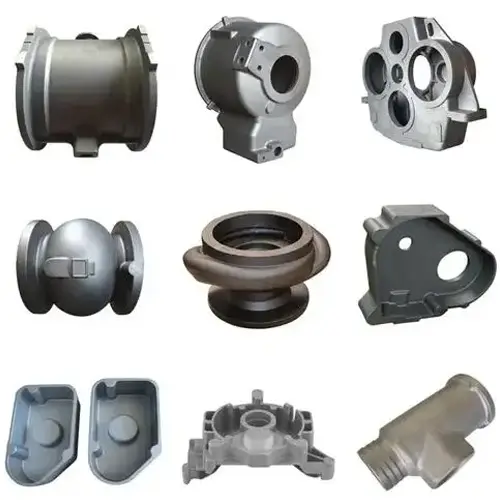In the production process of ductile iron castings, pores are a common defect that seriously affects the quality and performance of castings. The causes of pores are complex and diverse, involving multiple links such as raw materials, smelting process, mold design and operation. The following is a detailed analysis of the causes of pores in ductile iron castings.
1. Raw material problems
The quality of raw materials directly affects the quality of castings.
Metal material impurities: Pig iron, scrap steel or recycled materials contain oil, moisture, rust or organic matter (such as sand particles, paint residues), which decompose and produce gases (H₂, CO, etc.) during smelting.
Nodularizer/inoculant problems: Hygroscopic spheroidizers (such as magnesium alloys) or inoculants (such as ferrosilicon) are damp, decompose in molten iron to produce hydrogen (H₂), and are prone to forming subcutaneous pinholes.
Smelting auxiliary material pollution: Covering agents, slag removers and other water-containing or volatile substances are used directly without sufficient drying.
2. Melting process problems
Insufficient oxidation/deoxidation of molten iron: When molten iron is severely oxidized, oxides (such as FeO) react with carbon to generate CO gas, forming pores.
Severe spheroidization reaction: During spheroidization, magnesium vapor is blocked from escaping (such as unreasonable reaction chamber design), and residual gas is drawn into the molten iron.
Excessive inoculant or improper particle size: Excessive inoculant or too fine particles will aggravate gas precipitation.
Improper smelting temperature control: Too low temperature causes gas solubility to decrease, gas precipitates prematurely; too high temperature aggravates metal oxidation.
3. Molding sand and molding process
Moulding sand moisture is too high: When wet sand moisture is >4%~5%, high temperature molten iron vaporizes moisture to generate H₂O vapor, forming pores.
Poor air permeability: Too high compactness of molding sand or unreasonable particle size distribution hinders gas discharge.
Paint problem: Alcohol-based paint is not fully ignited, or water-based paint is not completely dried, and volatiles are vaporized to generate gas.
Poor sand core exhaust: Incomplete curing of resin sand core or insufficient exhaust channel, large amount of core sand gas (such as urethane resin decomposition produces N₂, CO).
4. Casting system design
Filling turbulence: The casting system design is unreasonable (such as too thin straight runner, improper position of inner gate), molten iron is involved in air or cavity gas.
Insufficient exhaust: Insufficient number of exhaust holes, wrong position or blocked, gas cannot be discharged in time.
Failure of riser function: Improper riser size or position, unable to effectively collect slag and exhaust.
5. Process parameter control
Improper pouring temperature:
Too low (<1300℃): Poor fluidity of molten iron, difficult for gas to float;
Too high (>1450℃): Intensified thermal decomposition and gas generation of sand mold/coating.
Too fast cooling speed: Thin-walled parts or local cooling are too fast, gas has no time to precipitate, forming microscopic pores.
Abnormal vacuum (during vacuum casting): Vacuum leakage or insufficient exhaust rate, residual gas intrusion.
6. Operational factors
Undried ladle: Newly built or wet ladle contacts molten iron, generating water vapor.
Waiting time after box closing is too long: wet sand mold absorbs moisture, and secondary gas is generated during pouring.
Pouring interruption: molten iron flow interruption causes oxide film to be drawn into gas.
Preventive measures
1. Raw material control: strictly screen furnace charge, pre-bake wet materials; use low hygroscopic spheroidizer (such as coated magnesium alloy).
2. Melting optimization: strengthen deoxidation (such as rare earth alloy), control melting temperature (1350~1420℃), and use inert gas protection.
3. Sand management: control the moisture content of wet sand (3%~4%), improve air permeability; add vent holes to sand core, and select low gas resin.
4. Process design: optimize pouring system (such as open design), add exhaust riser; set cold iron in thick and large parts to adjust cooling speed.
5. Operation specification: fully preheat the ladle, pour quickly and smoothly, and avoid molten iron oxidation.
The causes of pores in ductile iron castings are complex and diverse, involving raw materials, smelting process, mold design, gas intrusion in the mold, etc. In order to reduce the generation of pores, it is necessary to start from each link and take effective measures to optimize and improve. Only in this way can the quality of ductile iron castings be stable and reliable and the competitiveness of enterprises be improved.





